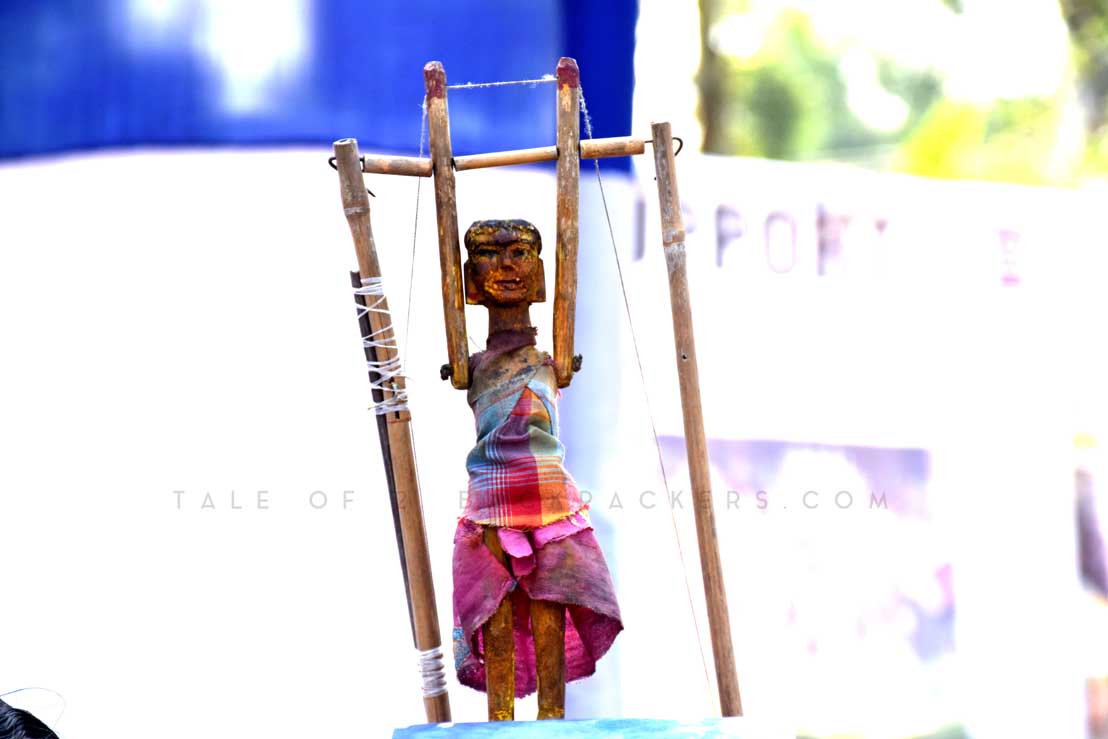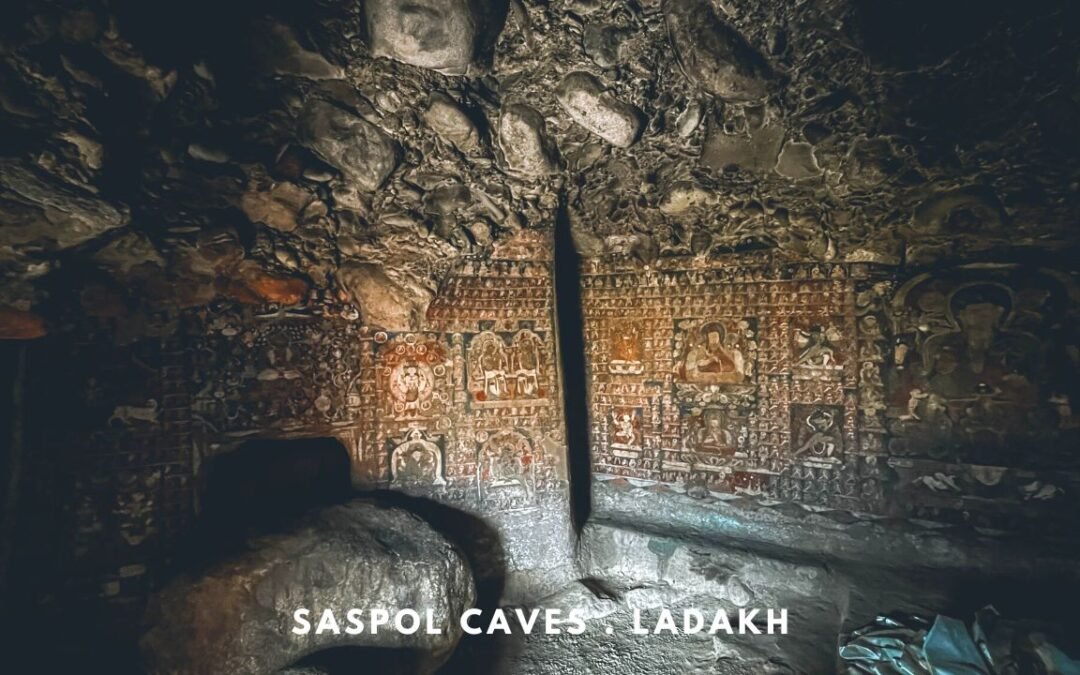Kushmandi block of South Dinajpur is the home of the wooden mask makers better known as Kushmandi masks or in colloquial terms “Mukha”. The makers are mainly concentrated in the village of Mahisbathan where a handicraft hub has been developed as a part of rural craft hub initiative under the MSME department of Government of West Bengal and in collaboration with UNESCO.

The masks
The Kushmandi Masks:
The Kushmandi masks are generally objects of devotion very devoutly crafted by the villagers. Thus these masks also called the Gomira masks catered to the needs of the Gomira dancers and to the villagers who gives these masks as offerings to the local deities with must piousness. To know more about Gomira dance form and its history, visit our previous post.
The wood-crafted Gomira masks represent the characters of the two forms of the Gomira dance – the original Gomira form and the Ramer Banobas. The masks depict the various characters of Goddess Kali in her indigenous form and also the mythical character of Hanuman.

The various mask forms
The craft:
During the last few years, these Gomira masks have been relegated to a coveted collector’s item. And with exposure to the larger world, their craft form also evolved. Now, along with the traditional masks, various other types are also made. Masks made of bamboo are also getting recognised. Infact, bamboo crafts are quite popular and the villagers have adopted the style of the Adivasi culture in their design and craft.

The masks of Kushmandi

Collector’s item
The craftsmen:
The Gomira craftsmen do not belong to any particular caste, although they might be followers of either the Vaishnav cult or the Shakti cult. The men are usually adept at mask making. The women folk have never been a part of mask-making, but they do practice natural fibre weaving on simple home-made looms and these naturally dyed mats, called ‘dhokra’ are sold in the local ‘haats’ (markets).

Dhokra or woven mats made by the women of the village
The process:
The Kushmandi masks or Gomira masks are usually made of light wood preferably the ‘Gamhar’ wood. Alternatively, wood from mahogany and mango are also used. The wood is first soaked and dried alternatively. This seasoning makes the wood crack resistant and reduces the chance of infestation. Later the wood is chemically treated by soaking the wood in a solution of boric acid, borax and copper sulphate mixed with water in the proportion of 3:4:5. This makes the wood termite and bug resistant. After seasoning and chemical treatment, the wood is cut in cross-section. The designs are then drawn on the wooden block and then the craftsmen carve out the motifs and designs on the block.

Mask making is an elaborate process
Originally the masks were painted with natural dyes. Red dyes were obtained from segun, green from seem, violet from jamun and black from jia tree. Nowadays, chemical dyes and paints have gained credence among the crafters.
The carvings on the masks are done very carefully using broad chisel and hammer. For finer details, narrow chisel and lighter hammers are used. Once the front of the face is made, the rear side is then carefully hollowed out. After this, the masks are smoothened and then coloured. It takes about 3 days to complete a mask depending on its complexity.

Patience is the key to precision

They come in small sizes too
The place:
Mahisbathan village is the main hub of Kushmandi masks. The craft is now nurtured by the Mahisbathan Gramin Hasta Shilpa Samabay Samiti Limited. This centre acts as a co-operative of craftsmen who are devoted to this art of mask making. Villages like Mahisbathan, Mangaldaha, Rianagar, Sabdalpur work together under the patronage of the Samiti. Ushaharan is a nearby village that specialises in the craft of bamboo work. There is about 250 crafts person in North and South Dinajpur practising the craft. SankarSarkar of Mahisbathan is one of the most renowned craftsmen who has been globally recognised.

The Mahisbathan Gramin Hasta Shilpa Samabay Samiti Limited
The fair and festival:
Mahisbathan itself is a very beautiful place. Just like any rural village of Bengal, it is filled with green paddy fields swaying in the mild wind. There are narrow winding roads amidst the fields that will lead you to the village. The villagers too are very friendly. You can definitely spend a couple of days at the village far away from your worries. Not only you can experience village life, but can also see the craftsmen at work. An annual fair is held at Mahisbathan where the handicrafts are displayed. And do not miss the evening soiree where various artists perform. The Gomira dance is also performed by the local artists.

A wooden doll
How to reach:
The nearest railhead is Kaliyaganj. Kushmandi can also be reached from Malda.
Where to Stay:
Accommodation is available at the Mahisbathan Gramin Hasta Shilpa Samabay Samiti resource centre. Also, there are many hotels at Kaliyaganj.
Places to see around:
Apart from Mahisbathan, there are a few places of interest nearby. Bangarh is the ruins of an ancient city from the period of the Senas.
There are Mahipal Dighi and the ruins of Neel Kothi, a standing witness of indigo menace in Bengal.
It is said that the Pandavas had hidden their weapons during their exile under the Shami Brikshya which is also nearby.
Finally, the Kulik Bird Sanctuary is only 35 km away.
So if you are planning for a different kind of weekend, you can visit Mahisbathan. For any other details contact us.

“Bhooter Raja dilo Bor”
Like this post? Please share it and let others know.
If you are aware of any such offbeat places, please let us know at info@taleof2backpackers.com. We will be happy to showcase it.









0 Comments